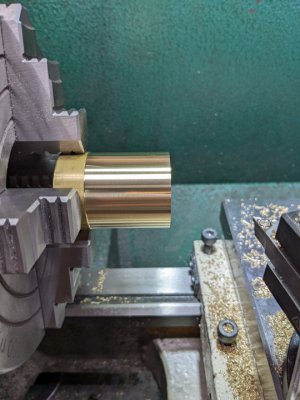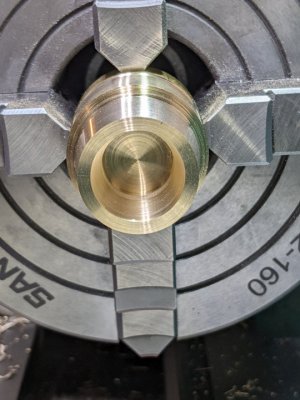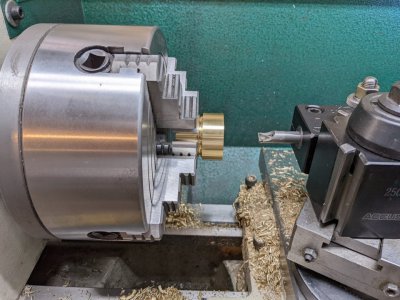- Joined
- Dec 18, 2019
- Messages
- 6,464
Did the o-ring section. My G0752Z is a bit more rigid than my mini-lathe. No chatter, at least at low speed. Pretty happy with how that section came out.
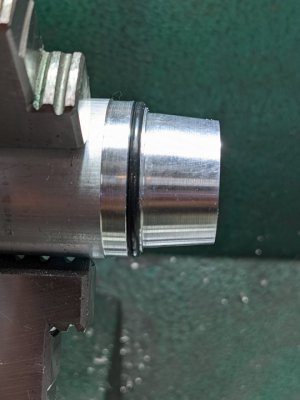
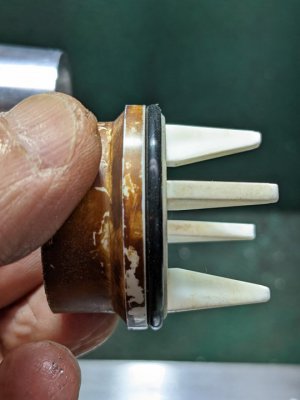
New piece fits into the conical section and the o-ring is the only thing that touches it. Think it will be ok.
Now I have to make some sort of mandrel to hold the piece after I cut the ears on the mill. I think if I make a thick washer about 17-22mm high and then split the washer into four quadrants, clamping with a four jaw chuck ought to hold the piece.
Something like this:
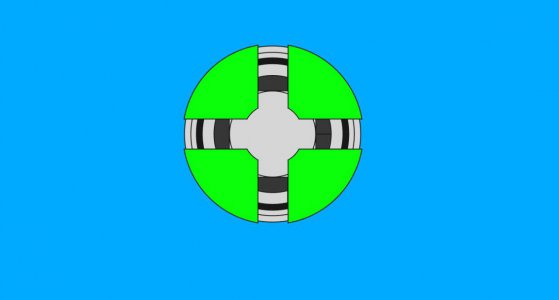
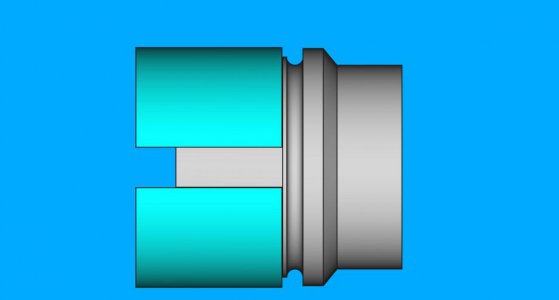
The ears would fit in the spaces. As the four jaw chuck moves inward, the ears would be held by the flats of the cut doughnut. Don't know yet how hard this is going to be to realize or use. Seems like I could turn the rod smooth, stick it in the mill, and pass a 1/4" mill vertical and horizontal. Then take the piece back to the lathe and part it off to get four pieces. Well let's see what happens!


New piece fits into the conical section and the o-ring is the only thing that touches it. Think it will be ok.
Now I have to make some sort of mandrel to hold the piece after I cut the ears on the mill. I think if I make a thick washer about 17-22mm high and then split the washer into four quadrants, clamping with a four jaw chuck ought to hold the piece.
Something like this:


The ears would fit in the spaces. As the four jaw chuck moves inward, the ears would be held by the flats of the cut doughnut. Don't know yet how hard this is going to be to realize or use. Seems like I could turn the rod smooth, stick it in the mill, and pass a 1/4" mill vertical and horizontal. Then take the piece back to the lathe and part it off to get four pieces. Well let's see what happens!


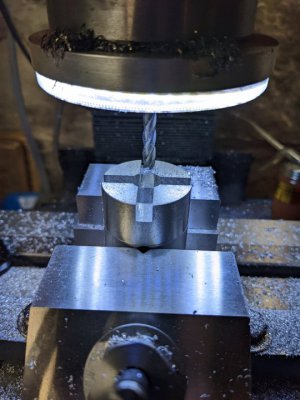
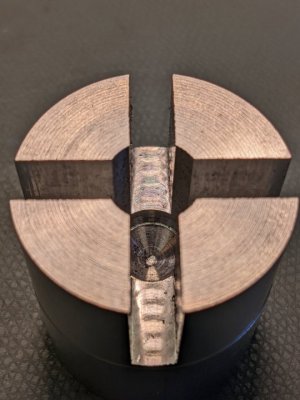
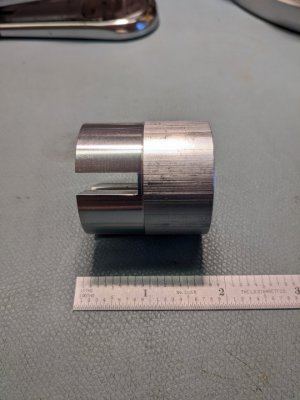
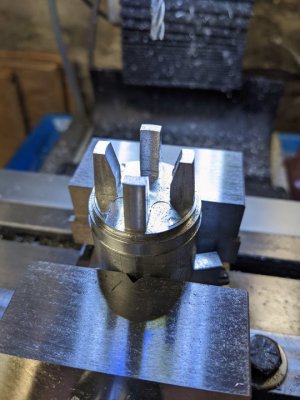
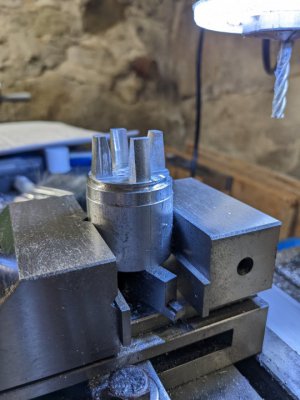
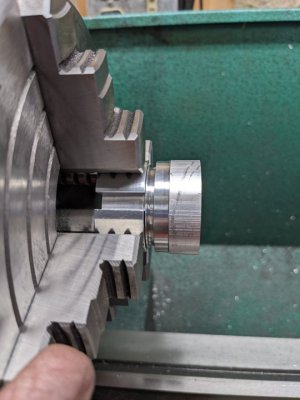
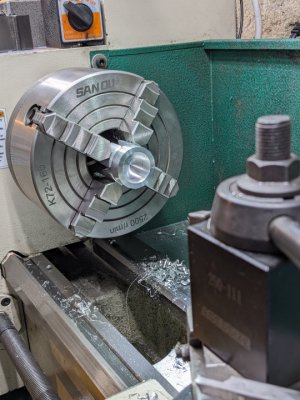
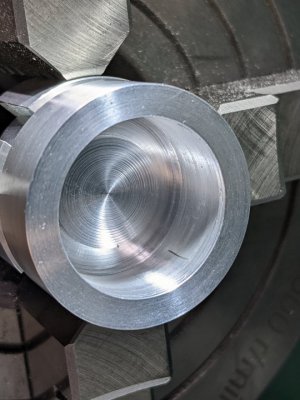
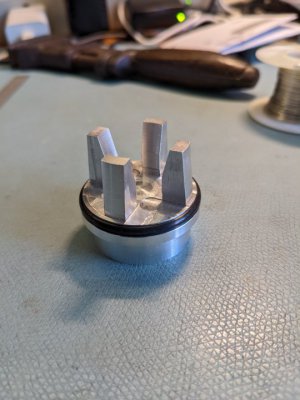
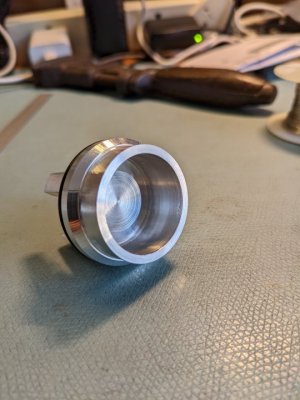
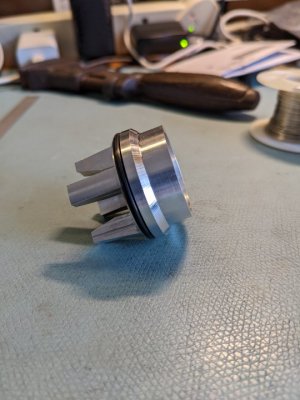

 No leaks. Woohoo! I had a slow leak from the copper spherical socket joint, but that's a different problem. There was a little bit of corrosion there and I get a drip every minute. I may have to replace the joint, or figure out how to ream it. It wouldn't take much to fix it. Of course, searching for a copper union reamer got me nothing.
No leaks. Woohoo! I had a slow leak from the copper spherical socket joint, but that's a different problem. There was a little bit of corrosion there and I get a drip every minute. I may have to replace the joint, or figure out how to ream it. It wouldn't take much to fix it. Of course, searching for a copper union reamer got me nothing.